#Traditional Bosnian Food
Explore tagged Tumblr posts
Text
Explore Traditional Bosnian Food – Buy Online Now
Dive into the flavors of Bosnia with traditional foods like cevapi, burek, and more. Browse a wide range of authentic Bosnian dishes, snacks, and pantry essentials online. Whether you’re cooking or snacking, enjoy the true taste of Bosnian cuisine delivered to your door. For more infomation visit our site: https://mezehub.com
0 notes
Text
The Balkan Breakfast Trend: Delicious or Dangerous?
A viral TikTok trend is stirring up concerns among health experts. The Balkan breakfast, popularized by user @.dayi_, features raw peppers and tomatoes, cheese, and bread. While many have embraced this colorful meal, experts warn about its potential digestive issues. Jamie Maitland, a certified nutritionist and founder of The Office Health, expressed her worries. “I have some concerns about…
#Albanian food#Balkan Breakfast#bosnian food#Bulgarian food#Cultural Cuisine#Fiber Rich Foods#Food Trends#Greek food#gut health#healthy eating#healthy lifestyle#Jamie Maitland#Macedonian food#Montenegro food#Nutrition Tips#Organic Ingredients#tasty food#tiktok trend#traditional food#Turkish food#Viral Recipes
0 notes
Text
Exploring Bosnia and Herzegovina: A Comprehensive Travel Guide
A Brief History of Bosnia and Herzegovina Bosnia and Herzegovina, nestled in the heart of the Balkans, has a rich and tumultuous history. The region was part of the Roman Empire and later the Byzantine Empire before becoming the medieval Bosnian Kingdom in the 12th century. The Ottoman Empire took control in the 15th century, influencing the culture and religion of the region significantly. In…

View On WordPress
#A Brief History of Bosnia and Herzegovina#A Brief History of Bosnia and Herzegovina Bosnia and Herzegovina#a visa is not required for stays of up to 90 days within a 180-day period. However#adventure#africa#aiming to improve standards and align with European norms. Visa Information For many nationalities#along with the Brčko District. The country continues to navigate its post-war recovery and development#and after World War II#and architectural influences that are still visible today in cities like Sarajevo and Mostar. Political Situation Today#and baklava (sweet pastry). The culture is warm and hospitable#and Banja Luka International Airport. The country has a growing infrastructure with well-maintained roads and an expanding public transporta#and Central European influences. Must-try dishes include cevapi (grilled sausages)#and cultural tours are popular activities. Q: How affordable is accommodation in Bosnia and Herzegovina? A: Accommodation is affordable#and entertainment are reasonably priced#and higher education. The country boasts several universities#and historical landmarks to learn about the rich history and culture. Safety Bosnia and Herzegovina is generally safe for tourists. However#and Jajce are top destinations. Q: What activities can tourists enjoy in Bosnia and Herzegovina? A: Hiking#and Roman Catholicism being the major religions. This diversity is reflected in the numerous mosques#and Roman Catholicism. Q: What are some traditional foods to try in Bosnia and Herzegovina? A: Cevapi#and synagogues. Food and Culture Bosnian cuisine is a delightful blend of Ottoman#and University of Mostar. Education reforms are ongoing#Blagaj#Bosnia and Herzegovina came under Austro-Hungarian rule. Following World War I#Bosnia and Herzegovina is a democratic republic with a complex political structure divided into two main entities: the Federation of Bosnia#burek#burek (filled pastry)#but it&039;s advisable to carry some cash for use in smaller towns and rural areas. Top Places to Visit Sarajevo: The capital city#but it’s good to carry some cash for rural areas. Q: What are some must-visit places in Bosnia and Herzegovina? A: Sarajevo#churches#credit and debit cards are widely accepted in cities and tourist areas
0 notes
Text
Looking for a Shabbat dinner centerpiece or a hearty midweek meal? Picture cubes of eggplant, zucchini, bell peppers, tomatoes and potatoes cooked together to create that special harmony only veggies that grew together in the sun achieve. You’re thinking of ratatouille, right? But what I have in mind is a heartier dish from Romania and Bulgaria called ghiveci or guvech.
Romanian ghiveci and Bulgarian guvech are indeed very similar to the famous ratatouille, but being peasant’s food, they’re more rustic and substantial. The veggies for guvech are cut into large, uneven chunks, and can be cooked all together at once, while for ratatouille, each component is fried separately before they are combined. This makes guvech preparation much easier, and allows for creative improvisations; you can easily add any vegetables in season. Besides the mandatory eggplant, zucchini, peppers, tomatoes and potatoes, green beans or okra are common. Guvech is seasoned very simply with salt, black pepper and occasionally paprika, to let the produce shine. The Bulgarian version is cooked with fatty meat, while most Romanian versions are vegan.
“In Bulgaria, guvech used to be cooked in a clay pot called gyuveche,” Etti Ben Yosef, a Bulgarian Jew who lives in Israel, told me. “The stew was cooked in the oven for many hours at low temperature.”
But these days, when Ben Yosef makes guvech for Shabbat dinner, she uses a pressure cooker to precook the beef short ribs before adding them to the vegetables. Then, she cooks the entire stew on the stove for a long time, putting it in the oven for the final hour to give it a nice crust. She feels lucky to share the recipe with her adult children. “I keep the tradition so the kids will remember,” she said.
Guvech’s origins can be traced to the Ottoman Empire that ruled the Balkan region for hundreds of years. The original Turkish dish, called güveç, is cooked in a wide, clay dish by the same name. It’s very similar to the Bulgarian guvech and includes chicken, lamb or beef. There are many other variations of the dish throughout the Balkans. Bosnian Đuveč or djuvec is the name of a clay pot as well as a veggie casserole that’s cooked with rice; Greek giouvetsi is also cooked with rice. In Romania, the eggplant-tomato version is considered summer ghiveci, while winter ghiveci is prepared with carrots, cabbage, cauliflower and mushrooms.
Bulgarian Sephardi Jews and Romanian Ashkenazi Jews brought guvech to Israel (where it’s pronounced “ghe-vech”) and made the dish widely popular. No wonder, given that eggplant and tomatoes are so beloved in Israel and are of such high quality. Early Israeli versions can be found in Molly Bar David’s “Folkloric Cookbook” from 1964. The first version includes 14 different vegetables (including celery root and cauliflower) and meat. The second version is for Romanian ghiveci that’s baked with a whole fish on top.
The vegetarian Romanian version is probably most common in Israel nowadays. And although it is traditionally served over rice, I like to serve it on another Romanian staple, mamaliga. It’s the definition of comfort food.
This recipe is the Bulgarian version of guvech that includes meat. You can make the recipe vegetarian by simply omitting the meat. The rest of the ingredients and instructions stay the same.
Notes:
It is recommended, and easy, to add any seasonal vegetables to the basic guvech. Consider adding: 1 lb butternut squash or sweet potato, cut into ½-inch dice; ½ lb whole okra, stems removed; or ½ lb green beans, cut into 1-inch pieces.
You can cook the meat, if using, up to two days in advance. Store the cooked meat in the fridge with the cooking liquid. Before using, remove from the fridge and discard the fat on the top of the pot (the fat will be solid and white in color).
Guvech keeps in the fridge for up to four days.
150 notes
·
View notes
Text
Sataraš

this is a traditional Bosnian vegetable dish, usually served over rice. i usually serve it with brown rice, which takes 40 minutes to cook. i put the rice on the stove first, and both are usually done right around the same time.
this can be made vegan by omitting or substituting the whipping cream (its primary purpose is to counteract the acidity of the tomatoes). i'm sure there are many variations of it, but this is the one i grew up with. note that the eggplant is an important addition - i personally don't like eggplant, but i will not make this dish without it.
ingredients
4-6 bell peppers (i like having multiple colors for the visual), roughly chopped (you want big chunks here, not diced)
2 small to medium or 1 very large tomato, roughly chopped
1 large (or two smaller) onion(s), chopped
1 small eggplant, skin-on if possible (if it's not organic, then probably peel it), cut into slices about the width of a finger (idk probably 1.5cm or 3/4 of an inch or so)
a handful of flour (any kind should work, i use whole wheat all purpose)
Vegeta (Croatian spice mix, available at international food stores and amazon if you're in the US) - probably one tablespoon-ish? i don't really measure, i just throw it in there. can always add more after a taste test. note that Vegeta includes salt, so don't also add salt.
olive oil and whipping cream (or milk, in a pinch)
steps:
clean and chop the veggies and heat some olive oil (medium-high) in a deep pan or large-ish pot (i make this in my Sedona 7.5qt non-stick wok with a glass lid which i bought for super cheap and is my absolute favorite. i was going to link to it on macy's website, but apparently it is no longer available. but if you ever see it out in the wild, it is hands down the best cooking vessel i've ever used.)
saute onion until soft and translucent. you can do this while chopping the bell peppers. if it starts to burn, add a tiny bit of water.
add bell peppers and saute for a couple minutes, while chopping tomato
add tomatoes, stir, lower to medium heat and let simmer while you do the next step
in a separate pan, heat up some olive oil on medium high, then press one side of each eggplant slice into the flour, then fry them, floured-side down for a couple of minutes - until the fried side darkens a little. it's important for the oil to be very hot before you put the eggplant in, or else it will just soak it all up.
back to your main pot, add the vegeta and a splash of whipping cream, stir thoroughly. at this point the peppers and tomato should be pretty soft and starting to meld together.
layer the eggplant slices, fried side up, on top of the other veggies, then cover with a lid and simmer on medium-low heat for 15-ish minutes, until everything is soft and cooked through
stir everything together - the eggplant should pretty much fall apart and integrate easily into the rest.
serve over rice!
9 notes
·
View notes
Text
Search Engine Optimization Service (SEO)

Have you spent a lot of money and resources on your amazing website and wondered why the traffic doesn't grow much? Being visible in Google search is of utmost importance nowadays. Why? 85% of people who are looking for products or services perform the search online.
Now, the hard truth is…
…if your website doesn't have backlinks, you are NOT going to be visible on Google!
With my advanced link-building strategy, you receive high-quality backlinks that will improve your SEO rankings so you can get more traffic and sales!
What are you going to receive?
High-quality backlinks in a simple report Ahrefs DR 50-70 SEO improvement that works like a charm Trustworthy & safe white hat service
You can also check my premium packages for more link juice and power coming to your website!
Let me do that heavy lifting for you!
🚀 Bringing your business to the extraterrestrial level with SEO & Content Marketing. My name is Virtual Superman and I lift the heaviest weights for you! 🔥
PROVEN Exclusive Backlinks That Boost Your Rankings.
BEAT YOUR COMPETITORS CALL VIRTUAL SUPERMAN
✅ Service Link ✅
Industry expertise: Agriculture • Animals & pets • Art & design • Beauty & cosmetics • Blockchain & cryptocurrency • Construction • Dental care • Education • Energy & utilities • Environmental • Events planning • Fashion & apparel • Financial services & business • Food & beverage • Gaming • Health & wellness • Kids • Legal • Lifestyle • Manufacturing & storage • Marketing & advertising • Media & entertainment • Medical & pharmaceutical • Non profit • Photography & videography • Public sector • Real estate • Religion & spirituality • Retail & wholesale • Science • Services • Society & culture • Sports & fitness • Technology • Transportation & automotive • Travel & tourism • Writing & publishing Language: Albanian • Arabic • Bengali • Bosnian • Bulgarian • Catalan • Chinese (simplified) • Chinese (traditional) • Croatian • Czech • Danish • Dari • Dutch • English • Estonian • Filipino • Finnish • French • Georgian • German • Greek • Haitian • Creole • Hawaiian • Hebrew • Hindi • Hungarian • Icelandic • Indonesian • Irish Gaelic • Italian • Jamaican Patois • Japanese • Kazakh • Korean • Latin • Latvian • Lithuanian • Luxembourgish • Macedonian • Malay • Maltese • Nepali • Nigerian • Norwegian • Oriya • Persian/Farsi • Polish • Portuguese • Punjabi • Romanian • Russian • Serbian • Slovak • Slovenian • Somali • Spanish • Swahili • Swedish • Tagalog • Tamil • Thai • Turkish • Urdu • Vietnamese • Welsh • Sinhala • Marathi • Ukrainian • Telugu • Gujarati • Pashto
#seo services#backlinks#website#fiverr#digital marketing#website design#search engine optimization#seo
2 notes
·
View notes
Note
💌 | Forget about sims, lets learn about YOU! Tell us one fact about yourself, and then send this to 5 other Simblrs to do the same🕊️🤍
while im fully swedish, i was mainly raised by my good ol' stepdad. and he is serbian/hungarian/bosnian with some finnish thrown in for good measure in his family- so i grew up with a lotta love for slavic foods and with a love for slavic myths and traditional fashion!
my grandpa is still hoping ill learn hungarian lmao.
6 notes
·
View notes
Text
Ne znam za vas, ali ja obožavam Vaskršnje peretke koje pravi moja baka. Sjećam se kad sam bila klinka da ih je pravila nekoliko dana prije Vaskrsa i držala u vangli u tatinoj momačkoj sobi prekrivene krpom. Kako nisam mogla da se strpim do Vaskrsa uvijek sam vješto (bar ja tako mislim) znala da ukradem jedan ili dva i da ih grickam u svojoj kućici (bakin podrum) ili na unskom keju 🙂
Kada je došla nova popadija Goga, znali smo svi iz ulice da se okupimo i pravimo peretke i šaramo jaja za Vaskrs u crkvenom domu. Različit spoj generacija koji spajaju nove i stare recepte i tehnike pravljenja peteraka i šaranja jaja, uvijek je rezultirao najukusnijim perecima i najljepše išaranim jajima. Pred svaki Vaskrs se sjetim ovih najljepših uspomena iz djetinjstva…
Danas smo baka i ja same, bez graje djece i druženja u Svetosavskom domu napravile peretke. Možda ovako u virtualnom svijetu ne možete suditi o svaršenom ukusu, ali možete uživati u fotkama i sami pokušati napraviti peretke i uvjeriti se u njihov božanstven ukus.
Potrebni sastojci
10 jaja + 1 jaje za premazivanje
10 kašika ulja
4 kašike šećera
2 šolje za kafu mlijeka
prašak za pecivo
so
1kg oštrog brašna
1kg mekog brašna
Priprema
Razdvojite bjelanjca od žutanjaka. U dublju posudu u koju ste odvojili žumanjca dodajte kaškicu soli, ulje, mlijeko, šećer i umutite dok ne dobijete ujednačenu smjesu.
U bjelanjca dodajte prstohvat soli i umutite ih u čvrst snijeg.
Kada ste umutili bjelanjca, dodajte ih u smjesu sa žumanjcima. Mješajte kašikom, nikako ne mikserom, dok ne dobijete ujednačenu smjesu.
U dublju zdjelu pomješajte meko i oštro brašno sa praškom za pecivo.
Dok mješate smjesu bjelanjaka i žumanjaka dodavajte postepeno brašno tako da umjestite tijesto kao za hljeb. Pobrašnite radnu površinu i još malo mijesite tijesto dok ne postane sasvim glatko.
Podijelite tijesto na približno jednake loptice i sameljite ga kroz mašinu za meso tri puta.
Prije nego počnete da mjesite i oblikujete peretke, u veliku šerpu dodajte vodu, posolite i dodajte kašiku ulja. Pustite da voda provri. Kada voda u šerpi provri smanjite na laganu vatru.
Kada ste tijesto premljeli tri puta, sjedinite ga i tako sjedinjeno tijesto podijelite na loptice od 110 grama. Ja sam od ove količine dobila 19 peretaka.
Od dobijenih loptica pravite oblike po želji. Kada umjesite peretke, dodajte ih u ključalu vodu. Kada se pereci podignu na površinu, kuvajte ih još 10 minuta. Ukoliko vam se pereci ne budu dizali, možda su se zalijepili za površinu šerše pa ih lagano odvojite kuhinjskom špahtlicom.
Skuvane peretke izvadize iz vode i ostavite da se hlade. Dok se pereci hlade, upalite rernu da se zagrije na 200 stepeni. U pleh od rerne stavite papir za pečenje, na njega poslažite peretke i premažite ih sa žumanjkom.
Kada ste premazali peretke, stavite ih da se peku 30 do 35 minuta na 180 stepeni. Pereci su gotovi kada porumene.
Srećan Vaskrs ❤



youtube
Vaskršnji pereci Ne znam za vas, ali ja obožavam Vaskršnje peretke koje pravi moja baka.
#bosnian food#croatian food#food#food blogger#hrana#serbian food#traditional food#Uskrs#uskršnji pereci#Vaskrs#Vaskršnji pereci
0 notes
Text
Now I don't know if I'm just stupid BUT
I never see any Slavic representation in fiction, specifically I never see any Balkan Slavic cultures, and I think that's a real shame.
Our cultures are amazing y'all.
So in an effort to amend that, here is an incomplete list of some cultural traditions, beliefs, foods, customs etc. of the Balkan Slavs, specifically Serbian Slavs (Balkan Slavs includes Serbian people, Bosnian people, Croatian people, Albanians, Romanians, Bulgarians, Slovenians, Montenegro, north Macedonia and Kosovo, which is a lot and as with any other culture, we're not a monolith so I won't be speaking on everyone everywhere, only my own culture).
So first things first, what does our culture best translate to in writing? Well, Serbian Slavic culture works best for fairy tale fantasy stories/books. Those books set in one village or one small town, where everyone knowe everyone and everyone is the sixth removed cousin of their best friend's neighbor, very self contained and full of little bits of folklore and rich with history.
Why?
Serbia has never been a large or powerful country historically, in fact spending a lot of time colonized and oppressed by other more powerful forces, and so a big number of our people has always lived in villages and small towns. There's maybe 3-4 actual cities in the entirety of the country. So, since our people have always lived in small, somewhat isolated settlements and communities, the best types of stories to apply our culture to are stories with similar settings.
Now, as you can imagine, having that degree of separation has also lead to a huge variety in our customs and traditions, where each village would develop it's own little idiosyncracies and unique twists on established traditions, which may seem daunting when you're hoping to write us, but don't worry, most of the changes I speak of are picky differences that no Serb will really get on your ass for (hopefully).
Okay, so to sum up: Serbian Slavic tradition is best applied to pretty self contained, small scale books with simple settings. Fantasy is a great way to explore this by the way.
Now onto the fun bit, the actual resources!
Let's start with food.
When I tell you us Serbians place A LOT of value on traditional food, I mean it. Good homecooked food is the backbone of any household and there's a lot of pressure on us to become capable cooks. I'm going to list some of our traditional dishes and how to make them, but first I should mention that because Serbia spent about 500 years conquered by the Ottoman empire, a lot of our initial culture was forced to assimilate with theirs, so some of the foods listed here could possibly have origins dating back to the Ottomans, it's honestly impossible to tell at this point as during those 5 centuries the lines really blurred.
Onwards!
1. Musaka is a dish made with potatoes, ground meat, onion or garlic, salt, eggs, milk and spices to taste.
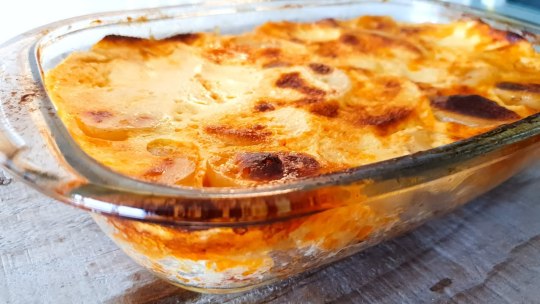

2. Đuveč is a dish made with potatoes, rice, tomatoes, peppers, carrots, onion, garlic, peršun (parsley), salt, pepper, oil and water.

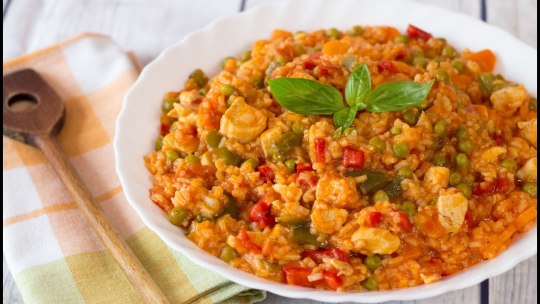
3. Sarma is a dish made of several wrapped rolls with filling. The filling is typically made with ground beef, rice, onion, carrots, garlic, dry bacon and spices to taste. The wraps are pickled cabbage leafs. This dish also has zaprška, which is a mix of usually flour and some other spices meant to be fried and added into the cooking pot for extra smell and flavor. You prepare all the parts and then put a bit of filling on the cabbage leaf and roll it up. There's a specific method of rolling up sarme so that they stay nice and closed. After that you arrange the rolls in a pot, add water and cook.
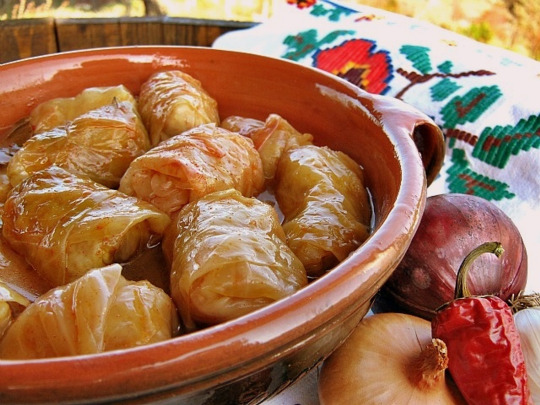
4. Zeljanica is a type of pie made typically with a mix of spinach, nettles and sometimes other herbs as well.
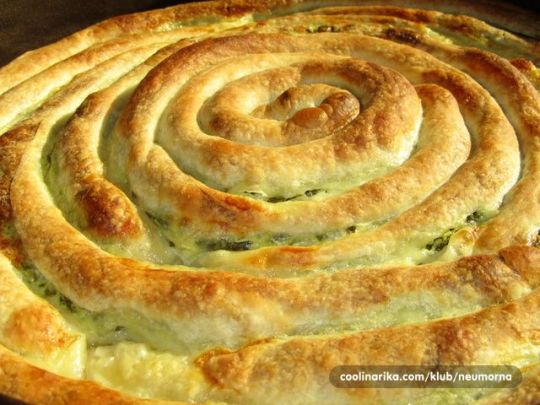

5. Lenja pita is a type of dessert! It is usually made with either apple slices, cherries or sour cherries as well as powdered sugar. It looks a little bit like cake but it is very different.
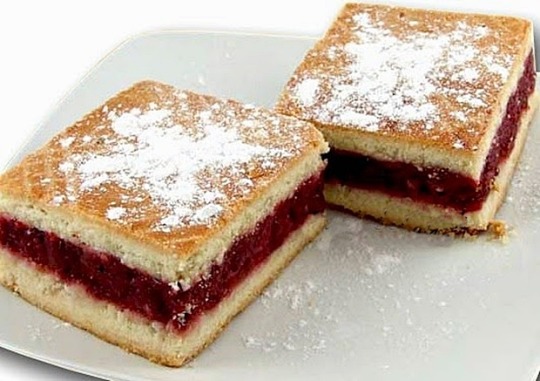

6. Salčići are another dessert, a type of pastry made with puff pastry usually filled with fig pekmez (it's kind of like jam) and topped with powdered sugar.

~
I've hit the image post limit so if anyone wants to hear more about Serbian food lemme know and I'll do another post.
I'll compile another post for our other traditions and customs, since this post is way too long already and there's still so much I want to share :)).
I know us Slavic people aren't really a marginalized group by any margins so representation isn't as important as it is for marginalized groups but I still think it would be fun if more writers knew and included some Balkan Slavic cultures, and although I'm only talking about Serbian Slavs here, I think this could be a great introduction to my folk :DD
#writing resource#slavic cultures#balkan slavs#serbian culture#serbian tradition#slavic representation#in writing#slavic food#for writers
120 notes
·
View notes
Note
Hi Klara 💖
First & foremost, Happy New Year 🥂🎉 I wish you & your loved ones the best for 2023 💖💖
Your idea is great so, as promised, here are a few questions to get to know you better !!
- What are your New Year's resolutions ?
- What are your main hobbies ?
- What is your favorite food ?
- What kind of Levi fic will you write first this year ?
- What is your favorite type of movies ?
- What other mangas/animes do you read/watch besides AOT ?
- What are your favorite AOT characters besides Levi ?
I can't wait to read your reply jfrksjfrksjfrks !!!
I hope you're having a great day 🫶
Kith 😘
Hey Val! Thank you and happy new years to you and your loved ones as well❤️🎆
• I need to start going to the Gym again. I haven't been a long time. Other than that, I need to give myself time to relax which I almost never do since I'm busy with studying most of the year. I also want to get my grades up, they aren't bad but they could be better.
• My main hobbies would be listening to music, my headphones are in my ears 80 percent of the day. I draw but I'm not comfortable enough with my art to post it. I also have been learning how to draw on my tablet which is taking time but that's just because I'm used to paper. Other than that I love to play video games and read books.
• My favorite food would be Sarma. It's a traditional Bosnian/Croatian dish that I have loved ever since I was a child. The dish is originally from Turkey. There is a lot of food from my culture that I just love. I love fries and chicken nuggets as well, I could eat them everyday.😁
• That's a tough one since I have a lot sitting in my drafts. There is a lot with canon Levi since it's my favorite kind of fan fiction to write but there is a few with modern Levi as well. I'll just have to see which one I happen to post first. :))
• my favorite type is either fantasy like pirates of the Caribbean / harry potter or historical fiction, I'm a total history nerd so anything with history can get me hooked. Ironically my favorite movie of all time is Home Alone but I think that's because it's a comfort childhood movie😊
• Before aot I actually loved dragon ball since I have two older brothers who used to watch it all the time it grew on me as a child. Nowadays tho I love Jujutsu Kaisen it's so refreshing in a way and all the characters are just amazing. (it wouldn't surprise you that my favorite character is Nanami Kento, I have a thing for men who are just tired of life, lmao.)
• Besides Levi it is probably Jean. I didn't like Jean at first because I was a huge Eren simp but as it got to season three I started to like him more and more. Hange and Erwin are always in my top five aot characters, I love them both equally. And Sasha :(( I don't think that there is anyone who doesn't like Sasha in the aot fandom.
Well this turned out longer than I thought but I had fun answering! Thank you for the questions Val! ❤️❤️
4 notes
·
View notes
Note
Hello! I absolutely LOVE your Balkan!MC AU 😆 (and your writing in general). If it’s not a bother, could you write some dorm leader relationship headcannons with a gender neutral Balkan!MC? You can include holidays and other traditions too if you want, go wild! (Also if you don’t want to do it it’s totally fine, thanks a bunch in advance anyway ❤️)
AAAAAA I'm so glad to hear Balkanoid MC is loved ❤️❤️❤️ As you know, the Balkans are so diverse and at the same time, it is not. I thought about what could be added here for the dating part. You might know the stereotypical behaviour of Albanian, Bosnian and Turkish older brother/father and I'm unsure if it's the same for the rest of the Balkans. I tried to something from each of them and the things we all can agree coffee=date
Anon is talking about this Balkan MC, Part 2 and Part 3: Starter Pack
You can join the discord server :D:D
🥀🥀🥀🥀🥀🥀🥀🥀🥀🥀🥀🥀
Riddle Rosehearts
Riddle and (Y/N) have been dating for a short time. During the weekend, they have convinced Riddle to go into the village for their date. After Trey promised to take care of the Heartslabyul while he is gone, Riddle agrees to go on a date outside. They go to a semi-fancy restaurant.
"Can I get the check, please? Riddle? What are you doing?" - "I'll pay for my share." - "No I'll pay both." - "That's unnecessary" - "I'll pay! This is Balkan way!"
After hearing Balkan way a number of times, Riddle decided to let go. He doesn't like the idea of them paying for both but he didn't want to argue. Despite that the check is higher than they expected, (Y/N) happily pays for both. They will make Riddle get used to them paying both of their date expenses in the future.
🦁🦁🦁🦁🦁🦁🦁🦁🦁🦁🦁🦁
Leona Kingscholar
(Y/N) and Leona have been dating for some time. Their relation has been chill until Leona said that his brother wants to meet the person he's dating. (Y/N) choked on the air at that moment. This moment was inevitable so they said okay.
"This is (Y/N), Ferena. You have met now we can go." - "I'M (Y/N)! HAHAHA"
They have never thought of meeting his brother at all and now their nerves are getting wrecked from just the thought of it. They don't even think of the king status of Ferena, just the older brother status. They thought they didn't get Ferena's approval at first and thought how it would go, getting shivers from it. They still feel tense even after Ferena laughs and claps them on the shoulder.
🐙🐙🐙🐙🐙🐙🐙🐙🐙🐙🐙🐙
Azul Ashengrotto
(Y/N) and Azul were flirting for some time and (Y/N) thinks it is time to ask Azul out properly. They are happy that Azul has no older brother that they will deal with but he has two dads, biological and step one and then there is the mother.
"I want to date you so I'm ready to meet your parents, Azul." - "Why would you want to meet them?" - "So they can see you are dating a nice person and get some sort of acceptance from them?"
(Y/N) is used to being family-oriented, the family involving in a huge part of their lives. They thought Azul was the same. Even if they won't meet with Azul's dads, maybe they will meet with the mother. It feels weird for them to not interact with the parents.
☀️☀️☀️☀️☀️☀️☀️☀️☀️☀️☀️☀️
Kalim Al-Asim
Kalim has invited (Y/N) to a date set in Scarabia dorm. Of course, Jamil will be the one to prepare the dishes. Kalim is usually one to prefer to be in the crowds but since they are on a date, it is just two of them and Kalim wants to be the one serving.
"You've finished already! I'll go bring some more!" - "Sure!":O
Regardless of who is cooking, Scarabia is the hosting place and (Y/N) is the guest. They can't just deny the food. They eat everything on the plate and Kalim keeps bringing more dishes. They have eaten the main dish, dessert and haven't even eaten any fruit. They don't want to be rude and refuse the food. Thankfully, Jamil comes and suggest Kalim that they should take a ride with the flying carpet.
👑👑👑👑👑👑👑👑👑👑👑👑
Vil Schönheit
(Y/N) is from the Balkans, the macho men are very common regardless of how they look. They are certainly not macho but the idea of it embedded in their mind. When (Y/N) does not see any machoness from Vil, they feel uneased as if they will see his macho side later on. They couldn't stand this feeling anymore.
"Do you like me?" - "What type of question is that?" - "You have a controlling side but you don't act, you know, macho." - "Fufu~"
(Y/N) has to explain the relationship stereotype that they are used to first. Vil just rolls his eyes at the men they just described. Such old fashioned way of thinking. He assures them that they shouldn't expect that behaviour from him and not think about it at all briefly before continuing whatever he is doing.
💀💀💀💀💀💀💀💀💀💀💀💀
Idia Shroud
MC learns that Idia is Greek in denial, a fellow Balkanoid. They think they can get along well with Idia and he is good looking so they ask him out. The best way to go is to ask him to drink together. They could get to know him better too.
"Would you like to drink rakı/rakija/rakia together?" - "I don't even know what that is."
(Y/N) feels offended to hear this but they think it must have a different name. They look upon the internet and see the best drink of Isle of Lamentation. To accommodate him, they offer to drink at his room and Idia accepts 1) he needs one 2) he will be in his room 3)(Y/N) is likeable.
Idia gets drunk after the first glass. Though he didn't add water in it so (Y/N) is impressed.
🐉🐉🐉🐉🐉🐉🐉🐉🐉🐉🐉🐉
Malleus Draconia
Malleus loves drinking black coffee and he sees (Y/N) as his friend so he decides to invite them to drink coffee together. He is happy to hear them say "Yes!" with such excitement. They are such a nice friend. On the day of coffee day, he sees that they are dressed fancier than usual. He thinks it is just what humans wear to drink coffee.
"I didn't expect you to ask me out, Malleus." - "Ask you out?" - "Ah yeah, old terms... Courting." - "I did not ask to court you, (Y/N)"
(Y/N) cringes at that moment and slurps the hot coffee instantly, only to burn their tongue and start coughing. Their face seems like it's on fire. He offers to help but they refuse help. After the incident, they seem somewhat different during their coffee time. He will ask what this was about to Lilia later on.
#twst#twisted wonderland#riddle rosehearts#leona kingscholar#azul ashengrotto#kalim al asim#vil schoenheit#idia shroud#malleus draconia#heartslabyul#savanaclaw#octavinelle#scarabia#pomefiore#ignihyde#diasomnia#twst headcanons#twst mc#twisted wonderland mc#twisted wonderland headcanons#headcanons#gender neutral reader
108 notes
·
View notes
Text
Why Ordering Bosnian Food Online is the Perfect Way to Experience New Flavors
Traveling through new and diverse cuisines has never been more accessible than today with online food ordering. If you want to try bold, exciting dishes from the Balkans, ordering Bosnian food takes the hassle out of travel to enjoy the traditional dish from your home. Whether you are from Rockville, MD, and want to try Balkan food or you're just in the mood to satisfy a craving buying Burek online, it is now possible to enjoy such mouthwatering dishes.. Read More: https://medium.com/@hubmeze/why-ordering-bosnian-food-online-is-the-perfect-way-to-experience-new-flavors-08736f6b085d

0 notes
Text
Wanda had landed in Mumbai, India hours ago. After a brief meditation in her hotel, she’d followed the faint energy signature. It led her to the woman she had been searching for. The Adversary was gone-- the threat to humanity had been dispelled. Yet, in its wake was a woman piecing her life back together. The government and X-Factor might not be interested in her anymore, but Wanda found Haven’s situation important more-so than ever. Gently, she knocked on the door. Wanda wore a more traditional dress with her favorite Bosnian scarlet and golden scarf draped over her unruly curls. She hoped appearing as such might put the other woman at ease. “Greetings. I was hoping you had a moment to chat?” She held out a basket of fresh food as an offering, along with a warm smile. “My name is Wanda. I hope I’m not imposing.” @mypralaya
14 notes
·
View notes
Text
Looking for a Shabbat dinner centerpiece or a hearty midweek meal? Picture cubes of eggplant, zucchini, bell peppers, tomatoes and potatoes cooked together to create that special harmony only veggies that grew together in the sun achieve. You’re thinking of ratatouille, right? But what I have in mind is a heartier dish from Romania and Bulgaria called ghiveci or guvech.
Romanian ghiveci and Bulgarian guvech are indeed very similar to the famous ratatouille, but being peasant’s food, they’re more rustic and substantial. The veggies for guvech are cut into large, uneven chunks, and can be cooked all together at once, while for ratatouille, each component is fried separately before they are combined. This makes guvech preparation much easier, and allows for creative improvisations; you can easily add any vegetables in season. Besides the mandatory eggplant, zucchini, peppers, tomatoes and potatoes, green beans or okra are common. Guvech is seasoned very simply with salt, black pepper and occasionally paprika, to let the produce shine. The Bulgarian version is cooked with fatty meat, while most Romanian versions are vegan.
“In Bulgaria, guvech used to be cooked in a clay pot called gyuveche,” Etti Ben Yosef, a Bulgarian Jew who lives in Israel, told me. “The stew was cooked in the oven for many hours at low temperature.”
But these days, when Ben Yosef makes guvech for Shabbat dinner, she uses a pressure cooker to precook the beef short ribs before adding them to the vegetables. Then, she cooks the entire stew on the stove for a long time, putting it in the oven for the final hour to give it a nice crust. She feels lucky to share the recipe with her adult children. “I keep the tradition so the kids will remember,” she said.
Guvech’s origins can be traced to the Ottoman Empire that ruled the Balkan region for hundreds of years. The original Turkish dish, called güveç, is cooked in a wide, clay dish by the same name. It’s very similar to the Bulgarian guvech and includes chicken, lamb or beef. There are many other variations of the dish throughout the Balkans. Bosnian Đuveč or djuvec is the name of a clay pot as well as a veggie casserole that’s cooked with rice; Greek giouvetsi is also cooked with rice. In Romania, the eggplant-tomato version is considered summer ghiveci, while winter ghiveci is prepared with carrots, cabbage, cauliflower and mushrooms.
Bulgarian Sephardi Jews and Romanian Ashkenazi Jews brought guvech to Israel (where it’s pronounced “ghe-vech”) and made the dish widely popular. No wonder, given that eggplant and tomatoes are so beloved in Israel and are of such high quality. Early Israeli versions can be found in Molly Bar David’s “Folkloric Cookbook” from 1964. The first version includes 14 different vegetables (including celery root and cauliflower) and meat. The second version is for Romanian ghiveci that’s baked with a whole fish on top.
The vegetarian Romanian version is probably most common in Israel nowadays. And although it is traditionally served over rice, I like to serve it on another Romanian staple, mamaliga. It’s the definition of comfort food.
This recipe is the Bulgarian version of guvech that includes meat. You can make the recipe vegetarian by simply omitting the meat. The rest of the ingredients and instructions stay the same.
Notes:
It is recommended, and easy, to add any seasonal vegetables to the basic guvech. Consider adding: 1 lb butternut squash or sweet potato, cut into ½-inch dice; ½ lb whole okra, stems removed; or ½ lb green beans, cut into 1-inch pieces.
You can cook the meat, if using, up to two days in advance. Store the cooked meat in the fridge with the cooking liquid. Before using, remove from the fridge and discard the fat on the top of the pot (the fat will be solid and white in color).
Guvech keeps in the fridge for up to four days.
2 notes
·
View notes
Text
Stuffed collard greens (Japrak/Sarma)

Sarma is a traditional Bosnian dish, often made with cabbage leaves, but I’m partial to the collard greens version myself. This was my first time making it myself, under my mom’s guidance, of course.
Ingredients
1 large bunch of collard greens
1kg ground beef
1/2 cup of uncooked rice (I used brown because it’s healthier, but traditionally, white rice is used)
3-4 onions
1 medium tomato
2 large carrots
1 parsnip
1 fresh bushel of parsley
a few celery stalks with leaves
a few thin slices of smoked meat
fresh ground pepper
Vegeta*
Some of the ingredients are harder to quantify, so here's a picture of all the veggies I added:

*Vegeta is a Croatian spice mix that is a staple of all cuisines in this region. This kind doesn't have msg and is as good as the original (which comes in a blue bag):

We use it for soup and many traditional dishes, and it is truly amazing. I highly recommend checking out an international food store in your area to pick some up. If you can’t find it, you can just use salt instead, but it’s definitely worth the extra effort of buying Vegeta.
Directions
To prepare the collard greens:
rinse the leaves individually to clean off any remaining dirt or soil
let them drain for a bit and then stack them in one big pile
fill a large pot about halfway with water and bring to a boil
drop the collard greens into the boiling water in one big stack, making sure to submerge them completely
use a large pair of tongs to flip the whole stack over and re-submerge it
cover the pot, turn off the stove, and let it sit for 5-10 minutes - this will get the leaves soft and pliable so you can roll them
For the filling:
finely dice all the veggies (incl. parsley and celery) - or, better still, chop them coarsely and throw them into the food processor, then blend until everything is diced and mixed, like so:

in a large bowl, mix the ground beef with the diced veggies.
rinse and drain the rice and add it to the meat and veggie mixture
add lots of ground pepper (I asked my mom how much, and she said “lots”)
add about 3Tbsp of Vegeta
mix all the ingredients until they’re well incorporated. The best way to do this is to use your hands. You can knead it like dough and just kinda squeeze it together in your fist.
Rolling the sarma:
This is the trickiest part of the process, and I’m still getting the hang of it myself!
depending on the size of the collard green leaves, you may need to split some of them in half length-wise before rolling
place a dollop of the filling inside the leaf, closer to the bottom end
fold the bottom of the leaf over the filling and roll it tightly, once or twice, before folding over one side of the leaf over the filling
then continue rolling all the way up and tuck in the other end
here’s how my mom does it:
Cooking:
You can use a regular pot and just cook it that way, but a pressure cooker is easier, so that’s what I did!
cover the bottom of the pot with a layer of thinly sliced smoked meat

layer the rolled sarma in the pot - the individual pieces should be squeezed fairly tightly together, and you will probably have about three layers of them:

add about a cup (maybe less) of water to the pot, just enough to touch the top layer of the sarma but not to submerge it all
lock the lid of the pressure cooker and cook on high heat until at full pressure
let cook at full pressure for 5 minutes, then reduce heat to low to maintain pressure
cook for 15 minutes, remove from heat and let rest 10 minutes
#cooking#recipe#cookblr#bosnian cuisine#bosanska kuhinja#sarma#japrak#the original mama's recipe book
9 notes
·
View notes
Photo

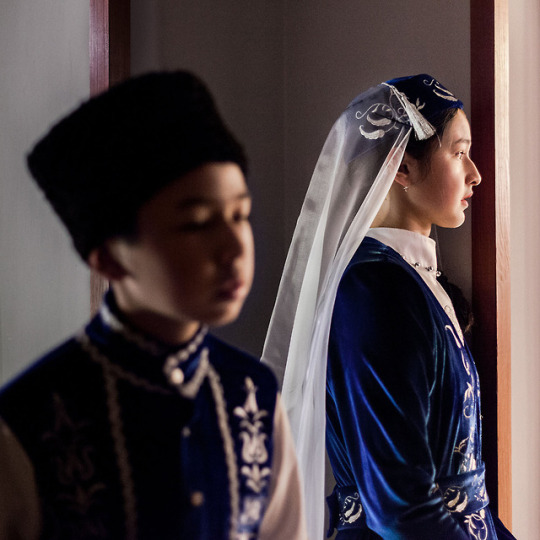


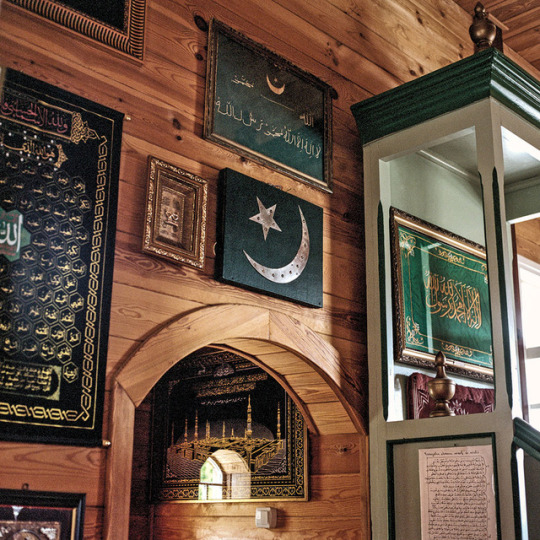

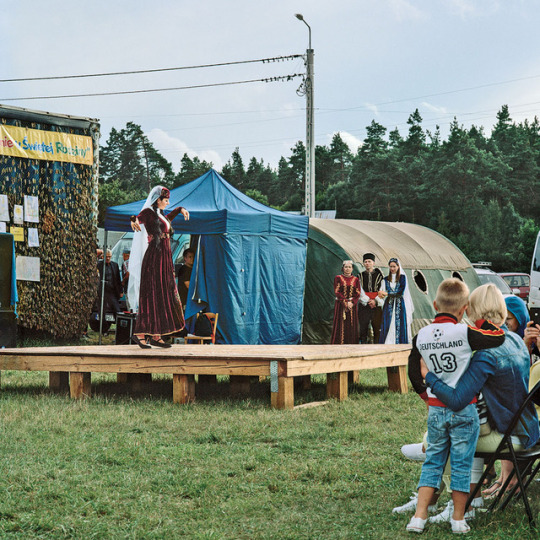


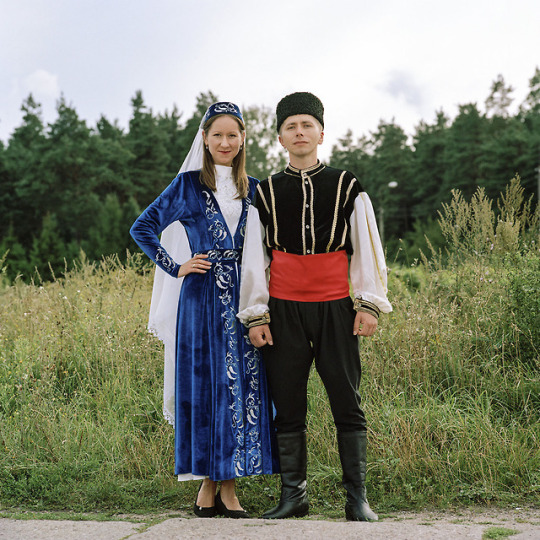
The Waning Crescent by Selim Korycki.
A photography project about the Polish Tatars, Poland's oldest native Muslim population
The Podlasie region of North-Eastern Poland is home to the largest remaining population of Polish Tatars, also known as Lipka Tatars, a Sunni Muslim minority group that have resided in Eastern Europe for more than 600 years.
Their history in the region begins with Tokhtamysh, who was a prominent Khan of a subdivision of the Golden Horde, a Turkicized entity of the Mongol Empire. Tokhtamysh and his clan were granted asylum in the Grand Duchy of Lithuania by Vytautas the Great. At the beginning of its history the Grand Duchy, a Pagan ruled-state, had come to occupy parts of Poland, Belarus, and Ukraine. Being that it was a multi-ethnic and multi-religious entity ruled by a pagan leader, it developed an early history of religious tolerance as its Pagan leaders were not fond of the idea proselytism, being targets of it themselves by Christian missionaries and conquerors. Eventually the Grand Duchy would combine itself with the Polish Kingdom to create the Polish-Lithuanian Commonwealth.
For most of its history the Polish-Lithuanian Commonwealth upheld and legislated the previous values of the Grand Duchy of Lithuania. Due to these circumstances the Islamic population of the Commonwealth were allowed to mobilize in society freely and practice their religion without fear of persecution, unlike most other parts of Christendom. This religious freedom also brought about more Islamic settlers in the form of Crimean and Nogay Tatars, who would soon be absorbed into the general Polish Tatar population. The Tatars were also granted nobility status and frequently intermarried with the Polish nobility, however when this occurred it was mostly between those Tatars who converted to Catholicism or Orthodoxy and Christian Polish or Ruthenian nobles. Tatars remained a free people unlike the majority of the non-nobility Christian population in Poland who lived their lives as serfs. They were also permitted to own Christian serfs, again something not seen in most other parts of Europe.The Lipka Tatars were heavily valued as cavalrymen due to their horse-riding skills, and fought against both the Teutonic Knights and later the Ottoman Empire in the Battle of Vienna. despite the fact that this would ensure an Islamic expansion into the rest of Poland. Due to their intermingling with the Slavic and occasionally Baltic populations of the region they quickly lost their language, however other traits of their culture survived, particularly their adherence to Islam. Most Lipka Tatars adopted the Polish or Belarusian languages as their native tongue, but interestingly enough also used the Arabic script when writing those languages. Making them the only Slavic languages outside of Bosnian to have used that form of calligraphy. After the partition of Poland and eventually its independence, most Lipka Tatars ended up living between Poland and Belarus.
The Waning Crescent is a photography project created by Selim Korycki, who had this to say about it:
“Despite being brought up as an atheist, I was always very aware of my family history as well as the history of Lipka Tatars. Following many discussions about rising nationalism and Islamophobia, I realised just how very few people are aware of the Muslim community peacefully settled in the heart of Europe for over 600 years. Knowing that Podlasie region is the only place within today’s Polish borders where Tatars not only lived for generations, but are still present today I decided to execute the project there. This was my first visit to the region,”
Despite the Polish Tatars influence on Polish history and culture, there has been a lot of misunderstanding of the Tatars since the end of WWII when the country experienced great homogenization and radical assimilation, which increased under the Communist regime. When commenting on the views of many of his countrymen Selim said:
“There is a belief, for example, that Polish Tatars look like Mongolian nomads, that they speak ‘another’ language, and are generally un-Polish. In reality, after 600 years of assimilation, Poles of Tatar heritage are mostly [indistinguishable] from the rest of the population. Just as their parents, their grandparents and their great-grandparents they speak Polish, think Polish, feel Polish, have Polish surnames, eat Polish food.” At the same time Polish Tatars cultivate their culture by practicing Islam, preserving traditional Turkic names, and nurturing traditional Tatar cuisine (Central Asian dishes with Eastern European influence).
Today when less than 5% of the population of Poland consider themselves to be a member of an ethnic minority, and over 85% Poles declares themselves to be Roman Catholic; the Lipka Tatars are a striking reminder that Poland was once a hugely multicultural and multi-religious country”
#poland#european muslims#muslim people#islamic people#polish people#turkic#tatars#muslim#islamic#tatar#lipka tatars#lipkowie#lipka tatar
5K notes
·
View notes